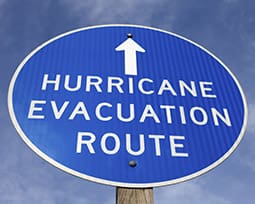Memorial Medical Center in New Orleans is situated three feet below sea level. Despite being in a region prone to hurricanes and flooding, the hospital’s main emergency-power transfer switches were located only a few feet above ground level, leaving the electrical system vulnerable (according to a Pulitzer Prize winning article on how Memorial dealt with the devastating effects of Hurricane Katrina). The hospital had an emergency plan, but it failed to detail how to deal with a complete power failure or how to evacuate the hospital in the event of a flood. Unfortunately, that is exactly what happened.
The hospital building weathered the hurricane, but early in the morning following the storm, city power failed. The diesel emergency generators were designed to power only critical equipment and emergency lighting. Air conditioning was shut down, which sent temperatures inside the hospital to over 100 degrees. Then the levees broke and floodwaters gushed from the sewer grates flooding the area. The hospital was stranded. 48 hours after the storm, the backup generators stopped. A chaotic evacuation followed, and many lives were lost.
The lessons learned from Katrina and at Memorial Hospital are many, but the Congressional and White House report emphasized, according to one source, the “need for better advance planning, better communications, more rapid deployment of resources, and better coordination.”
Developing a Hazard Mitigation Plan
As the costs associated with climate change and increased severe weather events continue to rise, investments in hazard mitigation and planning will prove to be financially beneficial. Studies show that every dollar spent on disaster preparedness is worth many times that in avoided costs to damaged property and infrastructure when prevention measures are put in place—not to mention the incalculable benefit of preserving the health and safety of residents.
A planning effort will include stakeholder engagement and the development of goals and objectives. Furthermore, risk assessment, hazard ranking and profiling, and an inventory of assets and possible losses will inform the choice of mitigation projects and influence cost estimates.
The Federal Emergency Management Agency (FEMA) outlines a four-phased planning process for identifying and implementing actions to reduce or eliminate loss of life, property, and function due to hazards.
- Organize Resources

- Assess Risks
- Develop a Mitigation Plan
- Implement the Plan and Monitor Progress
During the first phase, the planning team organizes interested members of the community and identifies the necessary technical expertise to provide guidance for the following phases. The team will also establish a steering committee and develop a schedule and goals for the plan. In the second phase, the planning team identifies risks, inventories the assets that are vulnerable to relevant hazards, and estimates losses. In addition, the team gathers historical information and communicates with local planning experts to assess vulnerabilities and create a base map to profile potential hazard events.
In the third phase, the team develops the mitigation plan and lays out in detail the proposed mitigation actions. Here, priorities and goals are established and an implementation strategy is prepared. In the final phase, the plan is formally adopted and implemented; however, the team will continue to evaluate and update the plan as needed and engage stakeholders from the community.
Benefits of Hazard Mitigation Planning
Developing a hazard mitigation plan makes some organizations and communities eligible to receive non-emergency disaster assistance, including state and federal funding for mitigation and recovery projects.
A completed plan will benefit a community by increasing awareness of hazards and risks and communicating priorities to local, state, and federal officials. Community engagement builds partnerships by involving stakeholders that do not commonly interact. This collaboration helps communities create synergies, share resources, and align risk reduction measures.
Ultimately, the greatest value of a hazard mitigation plan is in the implementation of cost-effective mitigation measures that reduce or eliminate short- and long-term risk to life and property. Communities that have adequate plans in place are better able to focus resources on the greatest risks and diminish vulnerabilities.
Helping Communities and Organizations Take Control
We have seen the value of this planning and have helped implement successful mitigation measures as well. In the case of the University of Massachusetts System, we helped to write Hazard Mitigation Plans for four separate campuses with funding from FEMA and the Massachusetts Emergency Management Agency.
Support is also sometimes needed after a storm. For example, Woodard & Curran served as the Program Manager for the City of Quincy, MA after a severe flood event to coordinate all mitigation claims to FEMA’s Post-Disaster Assistance Programs and worked with the City to develop and implement a capital improvement program to reduce the frequency, duration, and extent of future flood events.
Before, during, and after a natural disaster strikes, communities and organizations need to be prepared and able to protect residents, critical assets, and infrastructure. Having an actionable strategy in place will help communities increase the likelihood of business continuity and safety during and after a hazard event.
